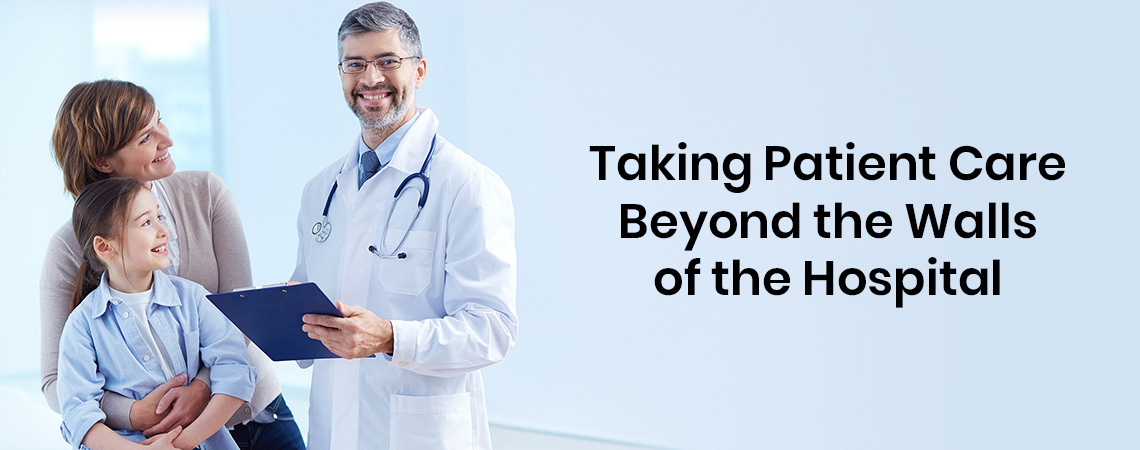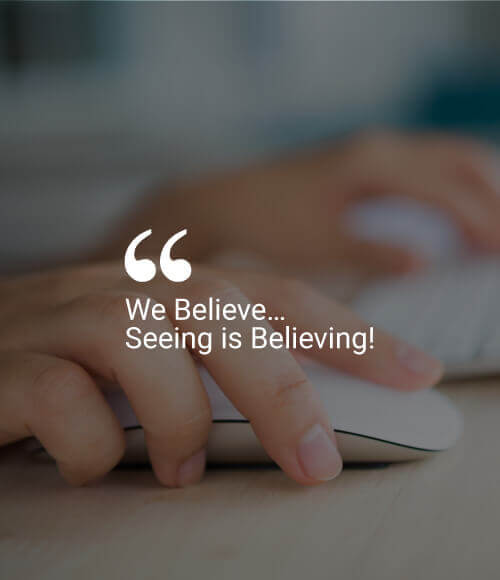
Technology is revolutionizing the way that hospitals operate today. Patient care has evolved from merely serving patients inside the four walls of the hospital to serving patients all the time; everywhere. Most hospitals are taking long strides toward attaining better patient care. The greatest barrier – communication – with patients, and within the internal staff of the hospital, is gradually being torn down.
All these initiatives leading to a coherent objective: Simplifying patient care; improving and maintaining a relationship with your patients to a point that each time they require medical assistance, the only name that pops up in their head is yours!
Is your hospital equipped to deal with these modern challenges?
The Multi-Channel Dilemma
 Times are changing, and so are the ways in which patients interact with their hospitals. Calling is now considered to be a primitive way of interaction. People are so hooked on to social media that it would take an apocalypse to part them from this precious compulsion.
Times are changing, and so are the ways in which patients interact with their hospitals. Calling is now considered to be a primitive way of interaction. People are so hooked on to social media that it would take an apocalypse to part them from this precious compulsion.
What does this mean for hospitals?
As a hospital, you must keep in mind that you have to remain connected to your patients without losing track of overall productivity. A contact center software for healthcare can help you do this. A contact center software for healthcare can converge all the interactions from your patients, from various channels, into one software. Your patient care agents do not need to check their emails, SMS, calls and social media pages to respond to the queries that have been raised. They simply need to access the contact center software for healthcare and obtain all the information needed to resolve the queries.
The Whatsapp Fad
 Whatsapp is widely used now, be it amongst friends, families or even to crack business deals.
Whatsapp is widely used now, be it amongst friends, families or even to crack business deals.
People are becoming more and more comfortable interacting through this popular messaging app. This presents as an opportunity for hospitals to get more personal with their patients. A contact center software for healthcare can integrate your existing communication system with Whatsapp so that you can effectively improve the relationship with your patients. A good contact center software for healthcare makes available a link of Whatsapp right on your website so that your patients can have an option of interacting with you in the most comfortable manner. For a patient care agent, this conversation can take place directly in the healthcare call center software.
The Appointment Scheduling Challenge #1 – The Patients
Scheduling appointments can be quite challenging! It can be quite challenging for hospitals to keep a track of the constant change in appointments; and for the patients? To call and pray to God that a patient care agent picks up the call soon. These obstacles can seriously hinder the communication between the patients and the hospital staff. Interstaff communication is also hampered due to these handicaps.
How can a customized call center software for healthcare make your patients’ life easy?

Imagine Joanna has to book an appointment at your hospital. Instead of calling the reception and waiting for them to answer (which usually takes a lot of time), she can just go to whatsapp, FB or your website and interact with the virtual healthcare assistant. Joanna goes to the website of your hospital and conversational bot pops up and asks what she is looking for.
This catches Joanna’s eye and she starts interacting with the conversational bot.
The conversational bot interacts with Joanna, asks for her name and her Date of Birth and whether or not she is a registered patient; Joanna replies, Yes!
The conversational bot intelligently gathers all the information about Joanna and asks for feedback about her previous appointment.
Joanna shares her feedback and the conversational bot saves this information in the system.
Joanna has been having a headache and fever, although she isn’t sure which doctor she has to approach.
Looking at the symptoms, the conversational bot sets up an appointment for Joanna with Dr. Sturgis, the general practitioner. The conversational bot displays the available dates for the week and gives Joanna the options available.
Joanna looks at the options and chooses the time most suitable for her.
The conversational bot books the appointment and gives the option of payment through GooglePay, Paytm or through her credit/debit card.
Joanna is quite impressed with the simplified appointment booking process and pays for her appointment right there!
This feature can also be easily used to order ambulances during an emergency.
The Appointment Scheduling Challenge #2 – The Staff
 The staff can get pretty confused when there are multiple appointments taking place!
The staff can get pretty confused when there are multiple appointments taking place!
The receptionist Barbara ends up taking Doctor Jim’s 2 pm slot while Janet from front desk thinks it’s available and takes the 2 pm slot instead of taking the 4 pm slot!
The coordination is weak! A call center software for healthcare ensures that such miscalculations are avoided. A good contact center software for healthcare is equipped with a common portal that keeps everyone updated about the schedule of each doctor. When an update is made, the healthcare call center software automatically reflects the status of the time slot. If a slot has already been booked, others would be unable to book the slot at the same time.
Now when Barbara books a slot, Janet knows it, Doctor Jim knows, even the conversational bot knows it! It just fits perfectly.
If there is any change in appointment due to an unforeseen circumstance, the healthcare call center software updates the patient about it automatically through whatsapp, email, or any other channel that the patient prefers.
The Integration Puzzle
“As care becomes more centered on the patient and the number of touchpoints and data inputs increases, care teams need a “single pane” view of the entire patient journey”
– John Halamka, executive director of the Health Technology Exploration Center of Beth Israel Lahey Health
 Some of us already have existing technology in place. In this case what can be done? Your existing solutions can be improved! A call center software for healthcare acts as a perfect partner to an existing Hospital Information System.
Some of us already have existing technology in place. In this case what can be done? Your existing solutions can be improved! A call center software for healthcare acts as a perfect partner to an existing Hospital Information System.
When your patient interacts with you through FB, Twitter, whatsapp, email, voice, SMS or the conversational bot, you can directly interact with them through your existing Hospital Information System and respond to all of them effectively. All the conversations will be saved in your Hospital Information System and the appointments made through all these channels will be reflected in your Hospital Information System.
Your patient care agents can make and receive calls directly from the Hospital Information System without having to switch to the healthcare call center software. Also, when a call arrives, a pop-up showing all the information of the patient is displayed to the patient care agents to help them get a better idea of the patient’s history.
The Struggle for Prominence
 If people don’t know about your services, how will they reach out to you?
If people don’t know about your services, how will they reach out to you?
A call center software for healthcare can help make the public more aware of the medical services that you provide. The conversational bot will create a positive impression on your website and generate more attention, while the multi-channel interaction will make your hospital more accessible to the general public. In essence, a call center software for healthcare can amplify your marketing efforts and make your brand more prominent. Following are a few features that a good healthcare call center software should have:
Voice Blaster: A feature that helps send multiple voice recordings and SMSes simultaneously in the most simplified manner to your existing and potential patients.
Proactive Dialer: A feature that makes multiple calls at one time and helps reach out to maximum patients in minimum time.
Finally, it is all about the patients. Making your hospital more patient-centric will put you in a position that most hospitals always aspire to be at. A patient-centric healthcare strategy is not only about having the best services in your medical and hospitality departments, but now has slowly transcended to seamless communication with patients.
 2276
2276
